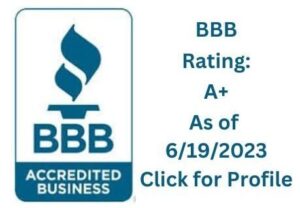Water damage is one of the most common problems, and the costly issue to resolve, that homeowners deal with. The additional stress is is dealing with the insurance claim process; it’s full of complicated documentation and policy limitations. Knowing how to handle a water damage insurance claim will give you the confidence to protect your home, reduce your repair time, and secure the coverage that you deserve. Here’s where to get started to make sure that your water damage claim is a success.
Understanding Water Damage and Insurance Coverage
Yet when it comes to insurance, not all water damage is treated equal. Some types of water damage are covered by the basic homeowners policy, while others require additional coverage or are excluded altogether. Before you make the claim you must know how your policy defines a water incident and how it handles it.
Does Homeowners Insurance Cover Water Damage?
In general, homeowners insurance will pay for water damage that is the result of a sudden and accidental water event, like a burst pipe or an appliance malfunction. But the coverage comes down to how the damage happened, and whether it could have been avoided with routine maintenance. You need to know where your policy comes down on the issue.
Will Home Insurance Cover Water Damage?
Although the phrases “homeowners insurance” and “home insurance” are sometimes used, interchangeably. However, the coverage provided is actually consistent: most policies cover water damage from accidental and sudden events. But not all sources of water leaked are actually covered — especially if the cause of the water intrusion is deemed long term or homeowner neglect.
Does Home Insurance Cover Water Leaks?
Coverage for water leaks depend greatly on whether the leak was sudden or gradual. Sudden leaks such as those from a broken pipe — are usually covered, but slow, unnoticed leaks that develop over time can be denied because of a lack of maintenance. However, knowing the difference can help you set expectations when making a claim.
Types of Water Damage That May Be Covered
The damage can occur in different areas of a home and insurance companies may treat each incident or claim in a unique way. The type and the location of the damage usually dictate whether it’s covered under a standard policy. Leaking roofs, damaged floors and walls etc. Knowing some of the types of water damage that could be covered is critical when considering filing a claim. Here is a look at a few such common scenarios homeowners may face.
Water Damage from Leaking Roof
Roof leaks are a significant source of water damage, particularly after storm events or when roofing materials deteriorate. If the source of the leak is a sudden event e.g: wind or hail, homeowners insurance may cover the damage. But if the damage is a result of wear and tear or a lack of maintenance, there may not be coverage.
Ceiling Water Damage
Ceiling damage is a common indication of water entry and may be caused by leaks upstairs, plumbing leaks, roof leaks. Ceiling repairs are generally covered by insurance to remedy the underlying cause if it is sudden and accidental, not if it stems from long term moisture buildup or structural neglect.
Water Damage to Hardwood Floors
There is nothing a hardwood floor despise more than water, it causes warping, stain and rot. And damage from burst pipes or appliance overflows is frequently covered especially if the event is new and unexpected. Usually insurance companies will evaluate both the source and extent of the flooring destruction.
Carpet Water Damage
Rugs can be soaked through and underneath, which can cause mold and structural damage if left unchecked. Homeowners’ insurance may cover sudden water events like pipe bursts or toilet overflows. The crucial question is whether the incident was sudden and not due to slow leaks or poor maintenance
How to File a Water Damage Insurance Claim
Water damage insurance claim can be challenging, particularly during a time of crisis. Take all the proper steps early on and make it as likely as possible to turn out good. However, it’s important to enter the process keeping a few things in mind.
Should I File a Home Insurance Claim for Water Damage?
Before submitting a claim, you’ll want to assess whether the damage is more than your deductible and how filing would influence your premiums in the future. Not every incident should be a claim, especially if the damage is minor or was the result of something that may not be covered. Homeowners should consider the financial cost and the chances of being approved.
How to Get Insurance to Pay for Water Damage
- Document the Damage Carefully
- Report to your insurer as soon as possible
- Read Your Policy to know what’s covered and what’s excluded.
- Prevent Further Damage by Switch off The water supply or fans.
- Support your claim by saving receipts for services.
- Hire a Professional If Needed
- Keep a record of conversations and emails.
Water Damage Insurance Claims Checklist
The below worksheet is designed to help you collect and document the information you might need for your insurance claim. It is also helpful to have a detailed list to make the claims process as easy as possible. It makes sure you don’t forget to do things (like photograph the damage, get temporary repairs or keep track of how much money you’re spending). An organized list might also accelerate the evaluation and payment process.
Common Water Damage Coverage Tips
There’s nothing simple about recovering from the flood except perhaps the mess in most peoples’ understanding of insurance options. Understandin what situations are generally covered and what insurers expect will make a difference in how smoothly your claim proceeds.
Water Leak in House
Broken pipes to appliance malfunctions, anything can lead to water leak in your home. It is likely that it is covered, but much depends on whether the leak occurred suddenly, as in the case of a burst pipe, or it happened as a result of long-term neglect. Before starting any repairs or claims, it is imperative to establish the source and evaluate where you are covered.
Insurance Claim for Water Damage
As in most cases, filing a successful insurance claim for water damage is often a little more involved than simply making a phone call. Taking the time to familiarize yourself with what’s covered, what’s needed in terms of documentation and what to expect in typical exclusions can also help homeowners.
- Main recommendations: Advertisement
- Review of contracts and specifications: It’s difficult, but you have to take the time to review the contracts.
The better prepared you are, the better chance you’ll have of getting the compensation necessary to restore your home properly.
Insurance Coverage
Water-intrusion damaged ceilings are a common symptom of a larger problem. Assuming the source of the water is covered by your policy, the cost to repair the ceiling itself typically is covered, as well. But policies will vary, particularly in the distinction between structural and cosmetic repairs.
Repair Costs and Insurance
Fixing water damage to ceiling materials can be costly depending on the materials that are damaged and to what extent. Insurance can cover some of these costs, but homeowners should be mindful of deductibles and limits and what causes damage is covered by their policy.
Preventing Water Damage to Your Home
Preventing them is way more affordable instead of repairing them. By being proactive and taking these easy steps around your home could protect your structure, lower the risk of mold growing and avoid making expensive insurance claims.
- Inspect the Roof Every Season: You should inspect your roof at least twice a year, when its warm in the spring and when its cool in the fall (especially after summer and winter).
- Inspect for Broken and Missing Shingles: Damaged or missing shingles can result in leaks.
- Sweep Out Your Gutters and Downspouts: Keep everything flowing smoothly by clearing leaves, branches, and debris that can cause blockage.
- Look for Flashing and Seals: Look at vent pipes, chimneys, and skylights because that is where you are more prone to get a leak.
- Keep an Eye on Interior Signs: Pay attention to water stains or discoloration on the walls or ceilings, an indication that a roof is leaking.
- Plan Professional Inspections: Regularly employ a professional roofer to find problems you may overlook and prolong the life of your roof.
How to Protect Your Floors from Water Damage?
Moisture can be very damaging to floors especially hardwood and carpet. Water damage usually begins at or near the ground level, whether it’s an issue with plumbing or appliances or seepage from the ground. Precautions can ensure floor materials are protected and expensive repairs or replacement is avoided in the future.
Sealing Leaks and Preventing Mold Growth
Minor leaks can lead to major issues if ignored. Water leaking into your basement or foundation not only weakens the structure, but it’s also the ideal environment for mold. One of the most effective ways to keep your home strong and protect its air quality is to be mindful of problem areas and seal leaks before they become bigger issues.
Conclusion
Water damae is stressful, but managing an insurance claim doesn’t have to add to your stress. By knowing your policy, documenting completely, and moving quickly, you may be able to keep yourself and your wallet from drowning. If you are uncertain, or overwhelmed, don’t hesitate to consult a professional for guidance both in cleanup and in understanding how the claims process in insurance works. Being ready today can help speed and ease recovery tomorrow.
FAQs
Will Homeowners Insurance Cover a Leaking Roof?
It depends. If the leak resulted from sudden storm damage, it’s usually paid for. If it’s because of shoddy maintenance or age, it usually is ruled out.
Does Home Insurance Cover Water Leaks?
Yes — if the leak is sudden and accidental. Long-term leaks are a form of negligence and are typically not covered.
How Much Does Ceiling Water Damage Repair Cost?
Typical costs to repair water damage on a ceiling can be anywhere from $400 to $1,500, depending on the ceiling, the damage, and the materials.
Do I Get Insurance to Pay for Water Damage?
Have your documentation in order and act promptly, using a professional restoration company that can help navigate claims.


















